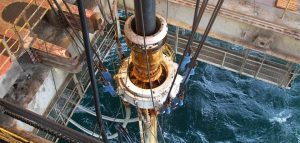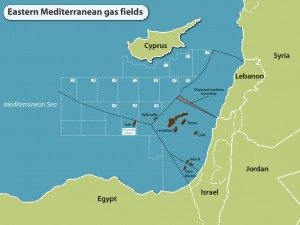
Today, isolated regions, such as islands, require significant capital investments to be able to use natural gas as an energy source. Yet, supplying gas to these regions is desirable, as its use for power generation emits less CO2 than oil and coal. The GASVESSEL project aims to research the feasibility of a new cost-efficient and flexible transport system for compressed natural gas (CNG). This concept has the potential to compete with traditional options of gas transport in the form of liquefied natural gas (LNG), which requires expensive regasification plants (for gas importers), liquefaction plants (for gas exporters) and pipelines, which are not flexible and have high construction costs. For East Mediterranean gas fields, the GASVESSEL represents an additional potential monetization option for future gas exploitation. With flexible and cost-efficient CNG transport, new supply routes to isolated end-users come within reach.
GASVESSEL partner, the Cyprus Hydrocarbons Company (CHC) has performed a market analysis in order to establish potential applications of the GASVESSEL in the East Mediterranean. The first step in this market analysis was to identify potential gas buyers, with a focus on power plants and wholesale gas distribution points. Gas buyers were classed as potential GASVESSEL customers when they met the following criteria:
- isolation from gas distribution networks
- proximity to onshore/offshore loading locations
- sufficient gas demand to justify an upstream development project
The countries and islands in the East Mediterranean that feature gas buyers that currently fulfil the above criteria are Cyprus, Crete, Lebanon and Egypt.

Cyprus, Crete, Lebanon all have isolated power plants that are currently far away from distribution networks or gas loading locations. Egypt, on the other hand, should be approached as a wholesale gas buyer. As a country that produces gas to feed its domestic market as well its export LNG plants, Egypt has invested in a vast gas network. In the near future, it will also bring new gas production online. However, with its increasing power demand and decline of production from existing fields, there exists the potential of a gas supply deficit in the long term. CHC therefore proposes the scenario to combine all power plants with one gas-entry point per island or country to aggregate demand. There is also the potential for Cyprus, Crete and Lebanon to be integrated into a single gas supply chain, by investigating the use of multiple vessels, gas storage points and shipping routes.
What is next?
The next step in the market analysis will be to analyse the four identified target markets in greater depth. Market characteristics such as current and future supply and demand balance, pricing, regulations, existing and planned infrastructure and market players will be described. These characteristics will be used to firm up the estimates of gas demand that can be supplied by the GASVESSEL concept. This will in turn be used to estimate end-to-end gas delivery costs for both the GASVESSEL concept and for competing options. GASVESSEL partner ESTECO will use the results of the market and cost analysis as input for the decision-support model. With this software tool, GASVESSEL operations and related costs can be optimized for each geo-logistic scenario.
